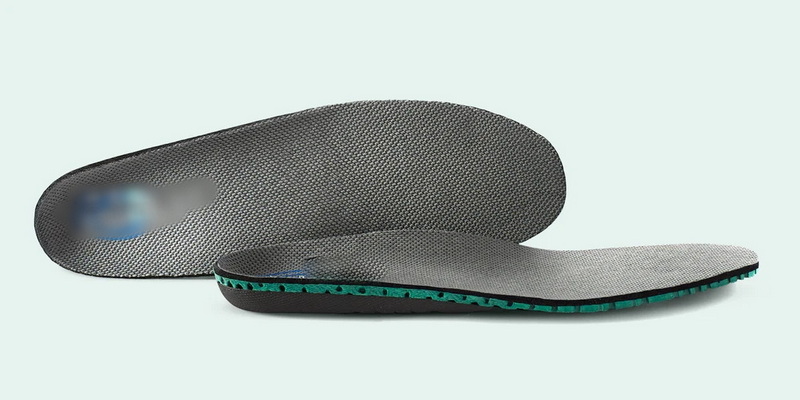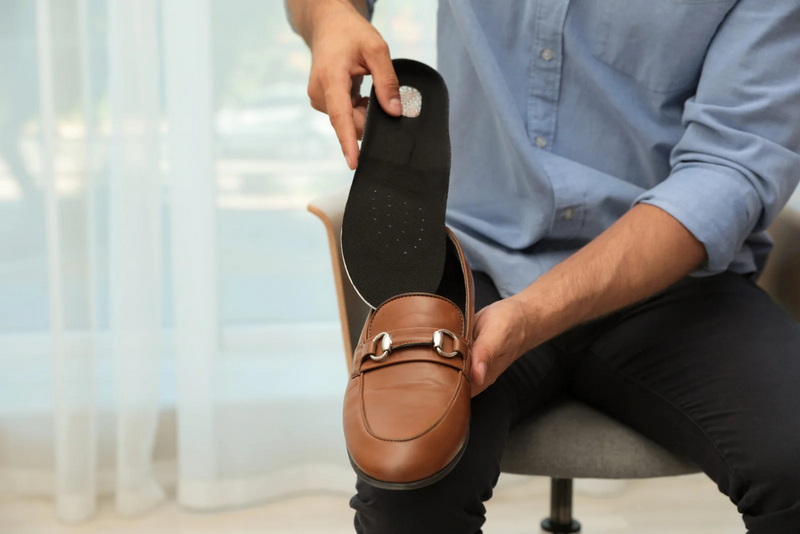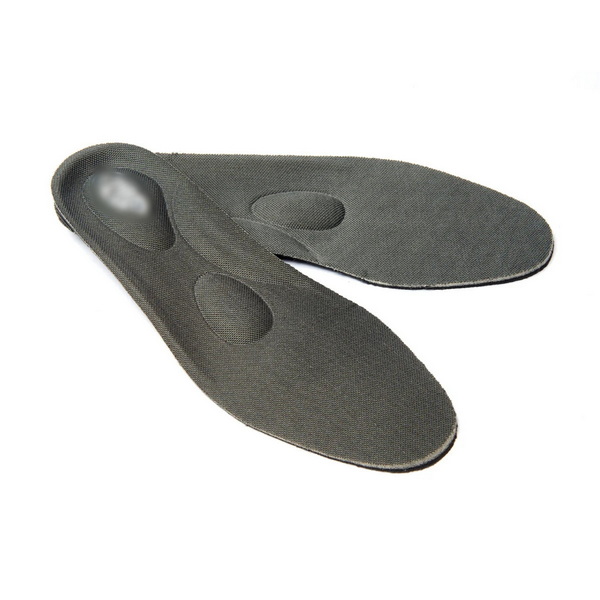










Content Menu
● The Primary Purposes of Insoles
>> Cushioning and Shock Absorption
>> Enhanced Fit and Customization
>> Controlling Moisture and Odor
>> Boosting Athletic Performance
● Classifying Shoe Insoles: A Comprehensive Breakdown
>> Orthotic and Medical Insoles
>> Performance and Sports Insoles
● Modern Materials and Manufacturing Innovations
● The Science Behind Perfect Insoles
>> Biomechanics and Ergonomics
>> Quality Control and Testing
● Applications: Who Relies on Shoe Insoles?
>> Athletes
● Choosing, Fitting, and Maintaining Insoles
>> Selecting Your Ideal Insole
>> Fitting Tips
● Manufacturing Excellence: A Glimpse Inside the Factory
● Future Trends in Insole Technology
>> 1. What's the difference between orthotic insoles and comfort insoles?
>> 2. How do I know which insole fits my shoe size?
>> 3. How often should insoles be replaced?
>> 4. Can I use the same insoles in different types of shoes?
>> 5. Are OEM insoles as good as branded ones?
Footwear does much more than cover our feet—it shapes our experience of the world. At the heart of comfort and performance in nearly every type of shoe lies an often overlooked component: the insole. In this article, we take a comprehensive journey into the world of shoe insoles, uncovering their essential functions, diverse types, the science and craftsmanship behind their manufacture, and insights for consumers, brands, and industry professionals. Whether you're an active individual, medical patient, or a buyer from a global brand seeking OEM solutions, understanding the true value of insoles could redefine how you walk through life.

Shoe insoles, sometimes called footbeds or inner soles, are cushioned layers designed to sit inside your shoes. They are removable, replaceable, and can be customized for virtually any use case. While some insoles are thin and simple, serving as minimal barriers between the foot and the shoe, most today are engineered for advanced comfort, support, and even orthopedic correction. The modern insole industry is built on specialization: from thick, gel-based cushioning for runners to structured, medical-grade orthotics for those with specific health needs.
One of the core reasons for using insoles is superior cushioning. As you walk, run, or stand, your body weight places constant pressure on your feet. Well-made insoles disperse this pressure and absorb shock, reducing foot fatigue and protecting joints throughout the day.
Proper support addresses not just the arches but the entire musculoskeletal system. Insoles can help align the foot, which in turn improves posture and body mechanics. For those prone to overpronation (rolling inward) or supination (rolling outward), a supportive insole can enhance walking gait and decrease the risk of injury.
When new shoes feel just slightly off, an insole can perfect the fit. They fill dead space inside the shoe, secure the foot, and prevent slippage, particularly useful for people with narrow feet, half sizes, or unique anatomical needs.
Insoles can reduce symptoms of chronic foot conditions. Designed to relieve pain and decrease pressure on sensitive areas, specific insoles are recommended for conditions such as plantar fasciitis, arthritis, bunions, and calluses. For diabetics, insoles with extra padding reduce the risk of pressure ulcers and improve overall foot health.
Advanced insoles are often treated with antimicrobial agents and incorporate moisture-wicking fabrics. By managing sweat and odor, these insoles extend shoe life and keep the wearer's feet feeling fresh.
Athletes benefit from insoles that offer high rebound, advanced shock absorption, and reinforced support tailored for their respective sports. Running, hiking, or court sports require different biomechanical needs which specialized insoles help address, often contributing to greater endurance and lower injury rates.
These are designed with the average consumer in mind, utilizing soft foams and gels to provide day-long comfort. They are perfect for those who stand or walk for extended periods.
Engineered for therapeutic benefit, orthotic insoles feature molded arches and metatarsal supports to address abnormal foot mechanics. Podiatrists prescribe these for plantar fasciitis, flat feet, overpronation, and other common foot ailments.
For athletes, performance insoles incorporate shock-absorbing pads, high-support arches, and breathable layers. These insoles help manage the extreme impact of physical activities while supporting anatomical efficiency.
These include a wide variety of innovative designs:
- Heated Insoles: Powered by small batteries, these keep feet warm in cold environments and are popular with outdoor enthusiasts.
- Height-Increasing Insoles: Discreetly add a few centimeters of height to the wearer.
- Anti-Fatigue Insoles: Specially designed for workers who spend many hours on hard floors, featuring unique wave or bubble structures that minimize muscle fatigue.
For those with unique anatomical structures or brand requirements, custom insoles are molded from 3D foot scans or impressions. OEM and private label options allow brands and wholesalers to create bespoke insole solutions tailored to their markets.
The remarkable diversity of today's insoles is a result of advanced materials science:
- Memory Foam: Conforms to the exact contours of the foot, ensuring personalized cushioning.
- EVA (Ethylene Vinyl Acetate): Lightweight and resilient, ideal for shock absorption.
- Medical-Grade Gel: Maximizes energy return and spreads impact over a larger area.
- PU (Polyurethane): Provides a robust balance between support and cushioning.
- Cork and Eco-Friendly Materials: Not only provide natural flexibility and support but align with the growing demand for sustainable products.
- Advanced Plastics and Carbon Fiber: Essential for rigid orthotic insoles that require durable support and precise control.

While materials form the foundation, expert design is equally vital. Designers and engineers draw upon biomechanics to develop insoles that reshape posture, redirect force, and optimize comfort.
Effective insole design incorporates data from gait analysis, pressure mapping, and advanced ergonomics. Engineers often use 3D modeling software to create insoles that address specific foot shapes and pressure points for maximum efficiency.
Leading factories employ in-house laboratories for repeated stress testing—simulating months or even years of use. Antimicrobial, slip, and stress resistance tests assure safety, while routine customer feedback cycles fuel ongoing improvements.
From students commuting across campus to professionals on their feet all day, anyone can benefit from the comfort and support of a good insole. Everyday insoles make shoes last longer and protect feet from fatigue.
Runners, basketball players, and hikers face extreme foot stress. Performance insoles designed for sport-specific needs help prevent overuse injuries and maximize performance.
Professions involving prolonged standing—including factory workers, medical staff, and hospitality employees—benefit from anti-fatigue insoles that dampen impact and reduce musculoskeletal problems over time.
Those diagnosed with foot problems or systemic conditions like diabetes require specialized, sometimes custom-molded, insoles to relieve pressure, minimize risk, and promote recovery.
Custom and adaptive insoles help the elderly maintain mobility, prevent falls, and minimize pain. For children, especially those with developing feet or structural concerns, proper insoles aid healthy growth.
- Identify Your Arch Type: Flat, neutral, or high arches require tailored support.
- Assess Activity Needs: Intense athletes, daily walkers, and desk workers have different requirements.
- Match Shoe and Insole: Ensure the insole fits without crowding the shoe or causing slippage.
- Pick Preferred Material: Consider preferences for softness, breathability, and durability.
- Always try insoles in the shoes you intend to use, wearing your regular socks.
- Trim along guide lines carefully for a customized fit.
- Replace insoles when they lose shape, show obvious wear, or cause foot discomfort.
- Clean insoles regularly with mild soap and water.
- Let them air dry thoroughly before reinserting.
- Store in a cool, dry place to prevent bacteria buildup.
As a leading Chinese OEM insole supplier, our factory combines traditional craftsmanship with advanced automation. State-of-the-art machines mold, bond, and finish insoles with precision, ensuring every batch meets strict international standards. Dedicated R&D teams constantly improve performance and sustainability, integrating recycled and biodegradable materials to meet global market demands.
Brands partnering with OEM professionals benefit from:
- Private labeling and custom logo printing.
- Flexible production lines, from small runs to mass orders.
- Rigorous testing and certificate provision for international compliance.
- Integrated distribution and efficient delivery solutions worldwide.
Advances in digital health and consumer preferences are reshaping the industry:
- Smart Insoles: Equipped with sensors to track steps, pressure, temperature, and gait data, offering personalized health feedback.
- Sustainable Materials: Booming demand for recyclable, biodegradable, and non-toxic insoles.
- 3D Printing: Enables rapid prototyping and fully customized insoles produced on demand.
- Healthcare Integration: Medical insoles increasingly linked to telehealth platforms for ongoing patient monitoring.
Shoe insoles are more than accessories—they are vital for foot health, comfort, and improved quality of life. The modern insole is a product of sophisticated engineering, advanced material science, and careful attention to individual needs. Whether you're chasing new athletic records, recovering from foot pain, or designing the next big product for your brand, the right insole can make every step feel better. As a world-class manufacturer and OEM service provider, we are dedicated to partnering with global brands, wholesalers, and professionals to deliver high-performance, innovative insole solutions. Discover how insoles can revolutionize your step, support your ambitions, and elevate your business.

Orthotic insoles are designed with structured support to address specific foot conditions, such as flat feet or high arches, and often include firmer midsoles for corrective purposes. Comfort insoles, on the other hand, focus on general cushioning and are ideal for fatigue reduction and everyday use.
Shoe insoles typically come in size ranges and include trimming guides for a custom fit. Simply match your shoe size to the recommended insole size and trim along the marked lines if needed to fit perfectly into your footwear.
Depending on engine routines and intensity of use, insoles should generally be replaced every 6 to 12 months. Visible wear, loss of support, compressed cushioning, or persistent odor are clear signs that a new pair is needed.
In most cases, yes—though it's best to ensure the insole fits snugly without bunching or crowding. Some sports or dress shoes may demand thinner, more flexible insoles, while work or hiking boots should use models offering maximum support and shock absorption.
When produced by reputable manufacturers with strict quality control, OEM insoles meet or even exceed major brand standards. They can be indistinguishable in quality, comfort, and durability, with the added value of customization and cost savings for bulk buyers.